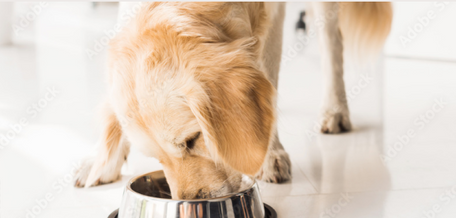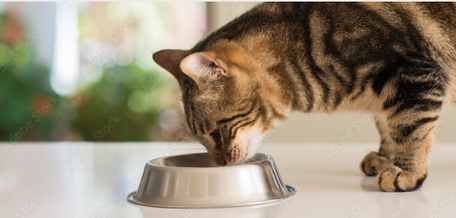Looking for the best rabbit cat food to help your allergy-prone or sensitive cat? In this 2025 buyer’s guide, we’ve rounded up vet-approved rabbit-based cat foods—including raw, freeze-dried, and limited-ingredient options—to support your feline’s digestive health. Whether your cat needs a novel protein or a gentle diet, these top picks are packed with nutrition and easy on sensitive stomachs.
Key Takeaways
-
Comparing top 5 rabbit cat foods at a glance
-
Look for rabbit cat food with single protein and no grains or soy.
-
Aim for at least 10% fat content and good organ meat inclusion.
-
Consider raw, freeze-dried, or gently cooked options based on your cat's needs.
-
A slow transition to new food helps minimize digestive issues.
Top Picks at a Glance
|
Brand & Product |
Type |
Best For |
Protein |
Fat |
Approx. Cost/Day* |
Key Features |
|
BJ’s Raw Pet Food – Rabbit Blend |
Raw Frozen |
Budget-friendly Lean raw option ideal for sensitive cats and for weight loss |
20% |
10% |
$3.00 |
Single protein, organ meats |
|
Smallbatch – Freeze-Dried Rabbit Bites |
Freeze-Dried |
Convenience & shelf life |
35% |
15% |
$5.00 |
Minimal prep, rehydrate for softness |
|
Vital Essentials – Rabbit Dinner Patties |
Raw Freeze-Dried |
High protein content |
45% |
18% |
$4.00 |
Grain-free, organ meat |
|
Primal – Feline Rabbit Formula |
Raw Frozen |
Balanced, moisture-rich diet |
57% |
21% |
$3.60 |
Complete raw meal, nutrient-dense |
|
Koha – Rabbit Pâté |
Canned |
Wet food option for sensitive cats |
9% |
4% |
$2.00 |
Limited-ingredient, grain-free, easy texture |
*Cost estimates based on ~4 oz daily serving; actual costs vary by cat size and retailer.
Try our best-selling Raw Rabbit Blend for cats with food sensitivities
Why Rabbit Might Help Sensitive and Allergy-Prone Cats?
So, why is everyone suddenly talking about rabbit cat food for sensitive tummies? Well, rabbit is considered a novel protein, meaning it's something most cats haven’t eaten before. That’s great news if your kitty has food sensitivities or allergies, because their body is less likely to react to it.
Rabbit is also pretty easy to digest and packed with vitamins. If you're struggling to find a hypoallergenic cat food that your cat can actually keep down, fresh rabbit-based diets, especially when formulated as limited-ingredient rabbit cat food, might help reduce their exposure to common allergens.
5 Vet-Approved Rabbit Brands in 2025
We have already seen the top 5 picks of rabbit cat food brands at a glance, let's get into some specific details about these picks. Remember, every cat is different, so what works for one might not work for another. Always check with your vet before making big changes to your cat's diet, especially if they have existing health issues.
1. BJ’s Raw Pet Food – Rabbit Blend
BJ's Raw Pet Food Rabbit Blend is a solid choice if you're looking for a lean raw option. BJ’s Purr Rabbit Blend is a whole prey, nutritionally complete meal that does not include fur.
BJ’s Raw Pet Food offers a premium rabbit cat food that's both delicious and nutritionally balanced—perfect for sensitive cats or those needing a lean, high-protein diet. This novel protein cat food features a simple, limited-ingredient recipe made from whole rabbit, including nutrient-rich organs like liver, heart, and kidney, along with calcium-packed rabbit bones. It’s an excellent option for supporting your cat’s vision, heart health, muscle tone, and overall vitality—especially for allergy-prone or overweight felines.
In addition to their classic raw rabbit cat food blend, BJ’s also offers an exciting variety: dehydrated rabbit lungs, feet, ears, heads, and even whole rabbit. For picky eaters, try flavorful combos like rabbit and beef or rabbit and salmon. Every product is made from natural, additive-free ingredients and shipped frozen straight to your door for maximum freshness.
2. Smallbatch Pets – Freeze-Dried Rabbit Bites for Cats
Smallbatch Pets Freeze-Dried Rabbit Bites are a convenient way to feed your cat a raw diet without the hassle of thawing. These little bites are packed with flavor and nutrients, and they're easy to rehydrate if your cat prefers a softer texture. The freeze-drying process preserves the natural enzymes and vitamins, making it a nutritious option.
3. Vital Essentials – Rabbit Dinner Patties
Vital Essentials Rabbit Dinner Patties are another great raw option. They're made with high-quality rabbit and other wholesome ingredients. These patties are designed to mimic a cat's natural diet, providing them with the nutrients they need. They're also grain-free and gluten-free, which is important for cats with sensitivities.
4. Primal Pet Foods – Raw Frozen Feline Rabbit Formula
Primal Pet Foods Raw Frozen Feline Rabbit Formula is a popular choice among raw feeders. It's made with rabbit, organs, and other beneficial ingredients. This formula is designed to be a complete and balanced meal, so you don't have to worry about adding any supplements. It's also a good source of moisture, which is important for cat health.
5. Koha – Limited Ingredient Rabbit Pâté
Koha Limited Ingredient Rabbit Pâté is a great option if you're looking for a canned food that's gentle on sensitive stomachs. The limited ingredient list minimizes the risk of triggering allergies or sensitivities. It's made with rabbit as the primary protein source, and it's free of common allergens like grains, soy, and corn. The pâté texture is easy for cats to eat, and it's a good source of moisture.
Cost-per-Meal & Storage Tips
Let's talk about the practical side of feeding your cat rabbit-based food: cost and storage. It's a bit different than scooping kibble, but totally manageable. Plus, knowing what to expect can help you budget and plan.
Here's a quick look at what you might spend, and how to keep that rabbit fresh!
Cost-Per-Meal Breakdown
Here's a general idea of what you might be looking at, cost-wise. Keep in mind these are estimates, and prices can change depending on where you shop and any sales happening. Also, portion sizes vary based on your cat's weight and activity level. Always check the product's feeding guidelines!
Looking for variety? Try our Salmon & Rabbit Blend for cats who crave seafood flair
Ingredient Checklist for Rabbit Cat Food: What to Look For
When selecting the best rabbit cat food, especially for sensitive cats, consider the following:
-
Single-Protein Source: Make sure the food lists rabbit as the sole protein to minimize allergen exposure.
-
Grain-Free and Soy-Free: Opt for formulas without grains or soy, as these can be common allergens.
-
Adequate Fat Content: Look for a minimum of 10% fat to support energy needs and coat health.
-
Inclusion of Organ Meats: Organ meats provide essential nutrients and mimic a natural feline diet.
-
Taurine Levels: Taurine is crucial for heart and eye health in cats; ensure it's included in the formulation.
Raw vs Freeze-Dried vs Cooked: Which Is Right for Your Cat?
Choosing the right preparation method for rabbit cat food depends on your cat's preferences and your lifestyle.
|
Feature |
Raw |
Freeze-Dried |
Gently Cooked |
|
Pros |
Mimics natural diet, potentially higher nutrient retention. |
Convenient, long shelf life, less messy than raw. |
Retains more nutrients than heavily processed foods, palatable. |
|
Cons |
Requires careful handling to avoid bacterial contamination. |
Can be expensive, may require rehydration. |
May be less nutrient-dense than raw, shorter shelf life than freeze-dried. |
|
Preparation |
Thawing, portioning. |
Rehydration with water is often needed. |
Ready to serve, minimal prep. |
|
Storage |
Freezer. |
Pantry. |
Refrigerator. |
|
Best For |
Dedicated owners comfortable with raw food safety. |
Owners seeking convenience and longer storage options. |
Owners wanting a balance of nutrition and ease of use. |
Consider factors like your budget, freezer space, and how much time you have for food preparation. Don't hesitate to consult with your vet to determine the most suitable option for your furry friend.
Freezer Space Considerations
Raw and freeze-dried rabbit diets need freezer space. Consider these points:
-
Measure your freezer space to get an idea of how much you can store.
-
Smaller packages might be more expensive per ounce but save space.
-
Freeze-dried options take up less space than raw frozen.
Thawing Times & Safe Handling
Thawing raw rabbit food properly is key to keeping your cat safe. Here's what to keep in mind:
-
Refrigerator thawing is the safest method. Plan on about 12-24 hours for a pound of food.
-
If you need it faster, submerge the food in a sealed bag in cold water. Change the water every 30 minutes. This should take 1-3 hours, depending on the amount.
-
Never thaw at room temperature. This can encourage bacterial growth.
Add crunch and nutrients with Rabbit Feet, Ears, and Heads.
Shop Now
Transition Plan for Sensitive Cats
Switching to a new diet should be done gradually to prevent digestive upset. Here's a suggested 7-day transition plan:
-
Days 1-2: 75% old food, 25% new rabbit cat food
-
Days 3-4: 50% old food, 50% new rabbit cat food
-
Days 5-6: 25% old food, 75% new rabbit cat food
-
Day 7: 100% new rabbit cat food
Adding a probiotic supplement during this transition may help support digestive health.
Conclusion
Exploring rabbit cat food options can be a beneficial step for cats with food sensitivities. With various formulations available, from raw rabbit cat food to freeze-dried and limited-ingredient rabbit cat food, there's likely a suitable option for your feline friend. Many veterinarians recommend rabbit as a starting point for cats with chronic digestive issues and for good reason.
“Rabbit is my first go-to for chronic IBD cats or those with suspected food allergies.”
— Dr. Jean Hofve, DVM (Source)
Curious? See our current rabbit options
Frequently Asked Questions
Why is rabbit considered a good protein for cats with allergies?
Rabbit is a novel protein, meaning it’s not commonly found in many cat foods. This makes it a great choice for cats with food sensitivities or allergies, as they are less likely to have been exposed to it before.
What’s the shelf life of fresh or freeze-dried rabbit cat food?
Fresh rabbit cat food typically lasts 2–3 days in the fridge after thawing, while unopened frozen varieties can last several months in the freezer.
What is the best way to transition my cat to rabbit food?
Start by mixing a small amount of rabbit food with your cat's current food. Gradually increase the rabbit food over a week or more to help your cat adjust without upsetting their stomach.
Are there any side effects to switching to rabbit cat food?
Some cats may experience digestive upset when switching to a new food. It's important to transition slowly and monitor your cat for any changes in their health.
Can I mix rabbit with other proteins?
Yes, but if your cat has food sensitivities, it’s best to introduce one protein at a time.
Is rabbit cat food a complete diet?
Yes, rabbit cat food can be a complete and balanced meal as long as it includes essential nutrients like taurine, vitamins, and minerals.




















